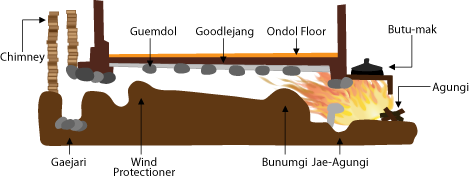If you've ever strolled along Broadview Avenue to take in the sweeping city skyline from the grassy hill at Riverdale Park East, you might've noticed a series of tall green pipes sticking out of the ground like some strange, forgotten plumbing.
The seemingly out-of-place posts aren't the remnants of old infrastructure, but an indication of what the greenspace once was.
Riverdale Park, which now sprawls across 104 acres and is bisected by the Don Valley Parkway and Don River, has a layered past.
The land that would become Riverdale Park was originally part of a large estate owned by John Scadding, one of Toronto's first settlers, who built a cabin along the east bank of the Don River in 1794. In 1856, the City of Toronto purchased the 48 hectares east of the Don River for the construction of the Don Jail.

The exhaust pipes along Broadview Avenue. Photo: Fareen Karim.
The land, cultivated first by John and Melicent Scadding, was later farmed by prisoners as part of a reform program.
Riverdale Park officially opened in 1880 on the west bank of the Don River, led by Mayor James Beaty and Henry Scadding, an early historian of Toronto. Following Riverdale's annexation in 1884, the park expanded to both sides of the river to accommodate the city's booming population.
By the early 20th century, however, the eastern half of the park was turned into a landfill. Household waste and ash were dumped there until the site was eventually closed and covered over in the 1920s.

Looking north on the east side of the Don River in 1912. Photo: City of Toronto Archives.
As the buried garbage decomposes, microbes break down the organic material and release methane gas, and to manage this, a series of tall green exhaust pipes were installed along Broadview Avenue.
The pipes slowly vent methane into the atmosphere, which is colourless and odourless, but highly flammable. A gravel trench also runs six feet underground to capture the gas and prevent it from migrating toward nearby homes.

Riverdale Park, east side in 1924. City of Toronto Archives.
To this day, you can still observe the green posts along the edge of Riverdale Park East, which are actively releasing the gas from decades-old landfill beneath your feet. While not hazardous thanks to the controlled venting system, it's a fascinating reminder of how city land has been repurposed over time.

An exhaust pipe seen beside a bench at Riverdale Park East. Photo: k.katsustudio/Shutterstock.com.
Once the site of a jail, then a landfill, Riverdale Park East was also briefly considered as a potential site for a massive domed stadium, in a bid that would ultimately result in the 40,000-seat SkyDome, now the Rogers Centre, constructed on former rail lands a few kilometres to the southwest.

The exhaust pipes are seen in the background as a crowd gathered on the park's grassy hill for the solar eclipse on April 8, 2024. Photo: Fareen Karim.
That plan, as we know, was eventually scrapped, but the sprawling park still remains one of Toronto's most visited recreational spaces, featuring tennis courts, sports fields, an artificial outdoor ice rink, and a ball hockey pad.
.png)




